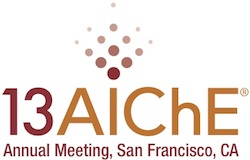

With the increasing market potential of therapeutic monoclonal antibodies (mAbs) , it has become critical to rapidly identify the most cost-effective purification processes that can handle increasing upstream productivities in a timely manner and overcome existing purification bottlenecks. Chromatography operations are identified as critical steps in a mAb purification process and can represent a significant proportion of the purification material costs , particularly due to the use of expensive affinity matrices as well as the large amount of buffer reagents required. A key strategic decision relates to the sequence of chromatography steps , which affect the not only the investment and operating cost for the chromatography steps , but also the overall downstream process. Another key decision is the chromatography sizing strategies and this is complicated by the dependencies between steps. There are a large number of possible permutations and trade-offs related to the packed-bed chromatography operations , such as opting for a smaller column run for several cycles to reduce resin costs versus a large column run for fewer cycles to save time. The aim of this work is to develop an optimisation-based business decision-support framework for the optimal design of chromatography purification steps in mAb manufacture. In this work , a typical mAb purification process with a sequence of three packed-bed chromatography steps was considered. Firstly , a mixed integer nonlinear programming (MINLP) model was developed to determine the optimal chromatography sequencing decisions (resin at each chromatography step) and chromatography column sizing decisions (number of columns , column diameter , column bed height , number of cycles at each chromatography step) , so as to minimise the cost of goods per gram (COG/g) of the whole mAb manufacturing process. Due to the computational difficulties to obtain the global optimum of the nonlinear optimisation model , the proposed MINLP model was reformulated as a mixed integer linear fractional programming (MILFP) model using exact linearisation techniques by introducing a number of auxiliary variables and constraints , which was solved by an adopted literature solution approach. An industrially-relevant example with different configurations of upstream and downstream trains was investigated , and the computational results proved the applicability of the proposed models and approaches.
